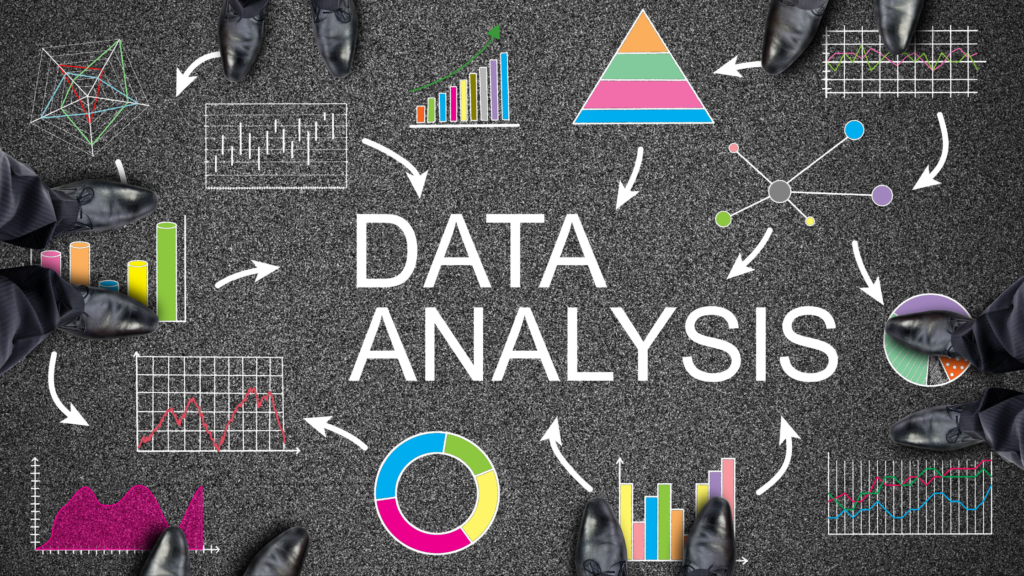How to Use Pandas for Data Manipulation
Table of Contents
Introduction
Data manipulation is a crucial skill for any data professional, and Python’s Pandas library makes it incredibly efficient and intuitive. Whether you’re cleaning raw datasets, transforming data for machine learning models, or analyzing trends, Pandas is your go-to tool. In this edition of our newsletter, we dive deep into how to leverage Pandas for effective data manipulation. From basic operations to advanced techniques, we cover everything you need to know!
What is Pandas?
The Powerhouse of Data Science Pandas is an open-source Python library designed for data manipulation and analysis. Pandas is a library that provides high-performance, easy-to-use data structures and data analysis tools. It is particularly well-suited for handling tabular data, similar to what you might find in a CSV file, SQL database, or Excel spreadsheet. It provides high-performance, easy-to-use data structures such as Series (one-dimensional) and DataFrames (two-dimensional). Pandas simplifies operations like filtering, grouping, merging, and aggregating large datasets with just a few lines of code.
At the heart of Pandas are two primary data structures:
- Series: A one-dimensional labeled array, capable of holding any data type.
- DataFrame: A two-dimensional, size-mutable, and potentially heterogeneous tabular data structure with labeled axes.
These data structures allow for efficient data manipulation, making Pandas an indispensable tool for tasks such as cleaning, transforming, and analyzing data.
Why Use Pandas for Data Manipulation?
Pandas provides a wide range of powerful functions for data manipulation. It allows you to:
- Load data from different file formats (CSV, Excel, SQL, JSON, etc.).
- Filter and slice data based on conditions.
- Handle missing data through imputation or removal.
- Merge, join, and concatenate multiple dataframes.
- Group data for aggregate analysis.
- Transform data using built-in mathematical functions.
- Sort and rank data by values or indexes.
- Reshape data for pivot tables and cross-tabulation.
In short, if you’re working with structured data, Pandas will help you clean, manipulate, and analyze it with minimal effort.
Implementing Data Manipulation with Pandas
Let’s break down how you can use Pandas for data manipulation step by step.
1. Importing Pandas and Loading Data: The first step is to import the Pandas library and load your dataset into a DataFrame. Pandas supports a wide range of file formats, including CSV, Excel, and SQL databases.
import pandas as pd
# Load CSV data
df = pd.read_csv('data.csv')
# Load Excel data
df_excel = pd.read_excel('data.xlsx')
# Load data from a SQL database
import sqlite3
conn = sqlite3.connect('data.db')
df_sql = pd.read_sql_query("SELECT * FROM table_name", conn)2. Exploring Your Data: Once the data is loaded into a DataFrame, you can begin exploring it using some key functions:
print(df.head())
print(df.info())
print(df.describe())3. Handling Missing Data: Real-world data is often incomplete, and handling missing data is crucial for accurate analysis. Pandas makes it easy to:
– Drop missing values using .dropna().
– Fill missing values with a specific value or a strategy (e.g., forward fill, backward fill) using .fillna().
# Drop rows with missing values
df_cleaned = df.dropna()
# Fill missing values with the column mean
df_filled = df.fillna(df.mean())4. Filtering and Selecting Data: Pandas allows you to filter and select data based on conditions. You can use conditional statements to subset your data.
# Filter rows where column 'A' is greater than 50
filtered_df = df[df['A'] > 50]
# Select specific columns
selected_columns = df[['A', 'B', 'C']]5. Grouping and Aggregating Data: For more advanced manipulation, you can group your data based on certain criteria and apply aggregate functions like sum, mean, or count.
# Group by a column and calculate the mean
grouped_df = df.groupby('Category').mean()
# Aggregate multiple functions
agg_df = df.groupby('Category').agg({'A': 'sum', 'B': 'mean'})6. Merging and Joining DataFrames: You can merge multiple DataFrames using .merge(), .concat(), or .join(). This is particularly useful when you need to combine datasets from different sources.
# Merge two DataFrames based on a common column
merged_df = pd.merge(df1, df2, on='common_column')
# Concatenate DataFrames along rows or columns
concatenated_df = pd.concat([df1, df2], axis=0)7. Reshaping Data: Sometimes, you need to reshape your data for better analysis, especially when dealing with pivot tables or cross-tabulations.
# Pivot a DataFrame
pivot_df = df.pivot(index='Date', columns='Category', values='Value')
# Melt a DataFrame (reverse pivot)
melted_df = df.melt(id_vars=['Date'], value_vars=['Category1', 'Category2'])8. Sorting and Ranking Data: You can sort your data by any column or index using the .sort_values() and .sort_index() functions.
# Sort by column 'A' in descending order
sorted_df = df.sort_values('A', ascending=False)
# Rank the data
df['rank'] = df['A'].rank(ascending=True)These examples barely scratch the surface of Pandas’ capabilities. The library offers many more features, such as advanced time series analysis and integration with other libraries like Matplotlib and Seaborn for visualization. Also, read the below for more insights.
Mastering Data Analysis and Machine Learning with Scikit-Learn
Career Corner
Mastering Data Manipulation with Pandas
In today’s data-driven world, mastering data manipulation is a critical skill for any data scientist or analyst. Pandas offers unparalleled functionality for efficiently cleaning, processing, and transforming data. Here’s how learning Pandas can advance your career:
- Automated Data Cleaning: Save hours by automating repetitive data cleaning tasks.
- Advanced Analysis: Use Pandas to prepare data for machine learning, statistical analysis, and business reporting.
- Visualization: Combine Pandas with other libraries like Matplotlib or Seaborn to create insightful visualizations.
If you’re looking to level up your data science skills, gaining proficiency in Pandas will put you ahead of the curve.
Tech Trends Spotlight: The Rise of Data Manipulation Libraries
As the volume of data grows, data manipulation libraries like Pandas are becoming more essential than ever. With Python being the preferred language in data science, the ability to efficiently manipulate data is paramount. The latest trends in this space include:
- Integration with Machine Learning Frameworks: Pandas is often the go-to library for preprocessing data before feeding it into machine learning models built with frameworks like Scikit-learn and TensorFlow.
- Real-Time Data Processing: New libraries like Dask are extending the capabilities of Pandas to handle real-time, large-scale data processing.
Data manipulation libraries are at the forefront of making data science accessible and scalable across industries.
Tools and Resources Recommendations
To dive deeper into Pandas and enhance your data manipulation skills, we recommend exploring these popular resources and GitHub repositories:
1. Pandas Official Documentation: Comprehensive documentation on Pandas’ features and functionalities.
2. Pandas GitHub Repository: The source code for Pandas, where you can explore issues, contribute, and learn.
3. Awesome-Pandas: A curated list of awesome projects, libraries, and resources related to Pandas.
4. Pandas-Cookbook: A GitHub repository full of recipes for performing specific tasks in Pandas.
These resources will provide you with plenty of examples, code snippets, and hands-on projects to further explore the power of Pandas.
Call to Action
Ready to put your Pandas knowledge into action? Start by exploring your own datasets, manipulating them with Pandas, and sharing your findings with the community. Join our Data Science Demystified Network on LinkedIn to discuss your projects and challenges with other professionals!
Closing Thoughts
Pandas is a versatile and powerful tool for data manipulation in Python. Whether you’re handling small datasets or managing large-scale data pipelines, Pandas can help you perform complex operations with ease. We hope this edition has provided you with the insights and resources you need to start. Keep exploring, keep coding, and stay ahead in your data science journey! Happy coding!




Good web site you’ve got here.. It’s difficult to find quality
writing like yours nowadays. I seriously appreciate people like you!
Take care!!